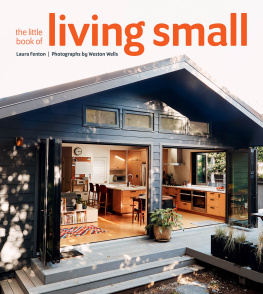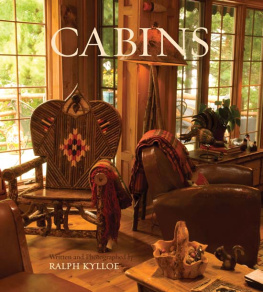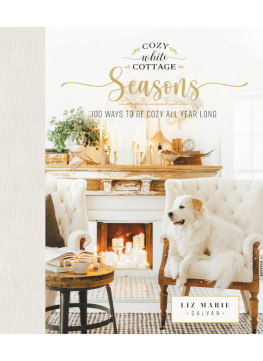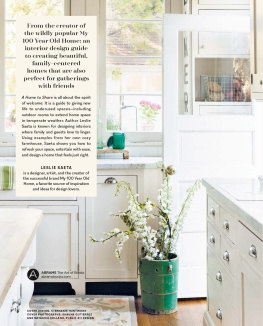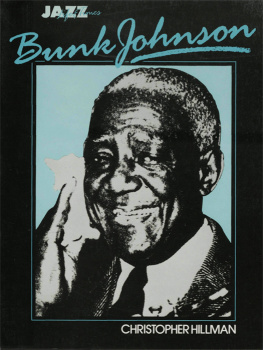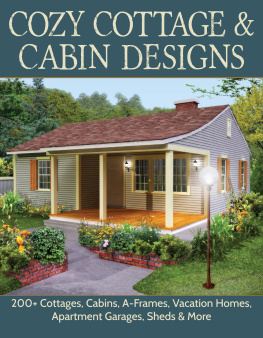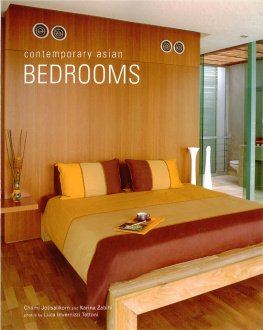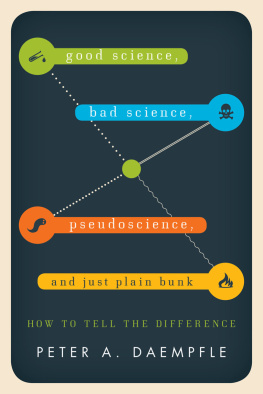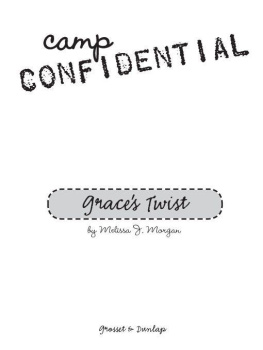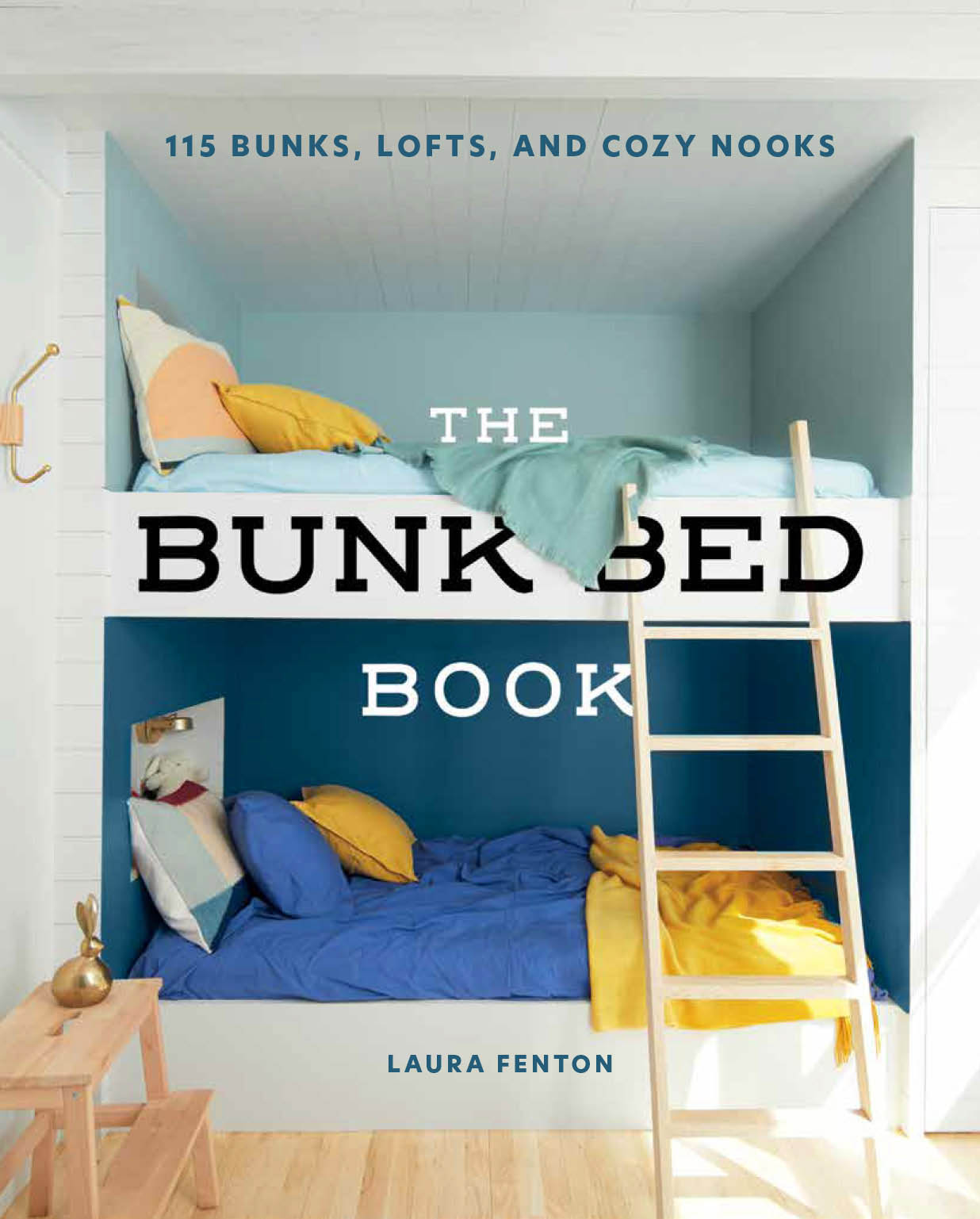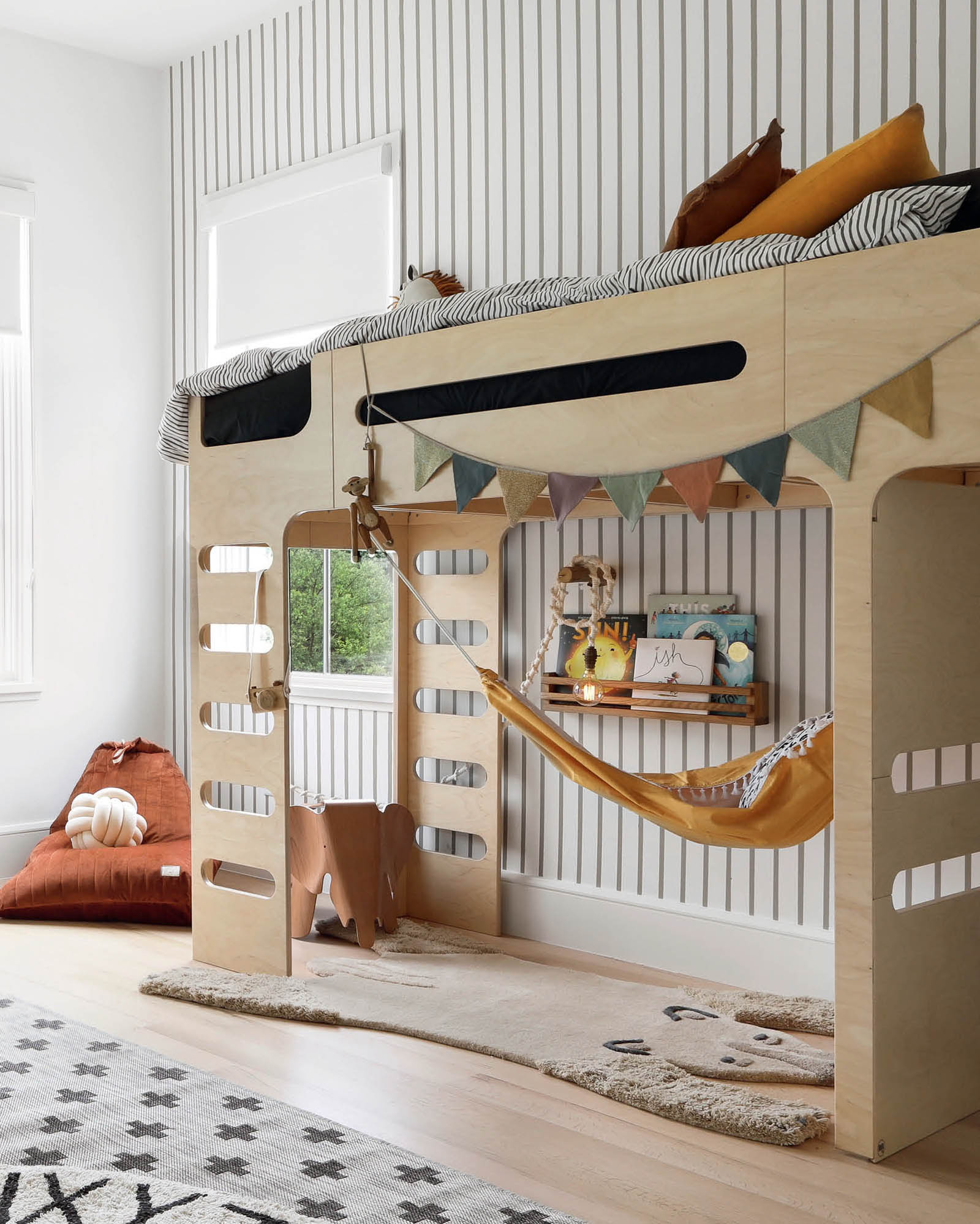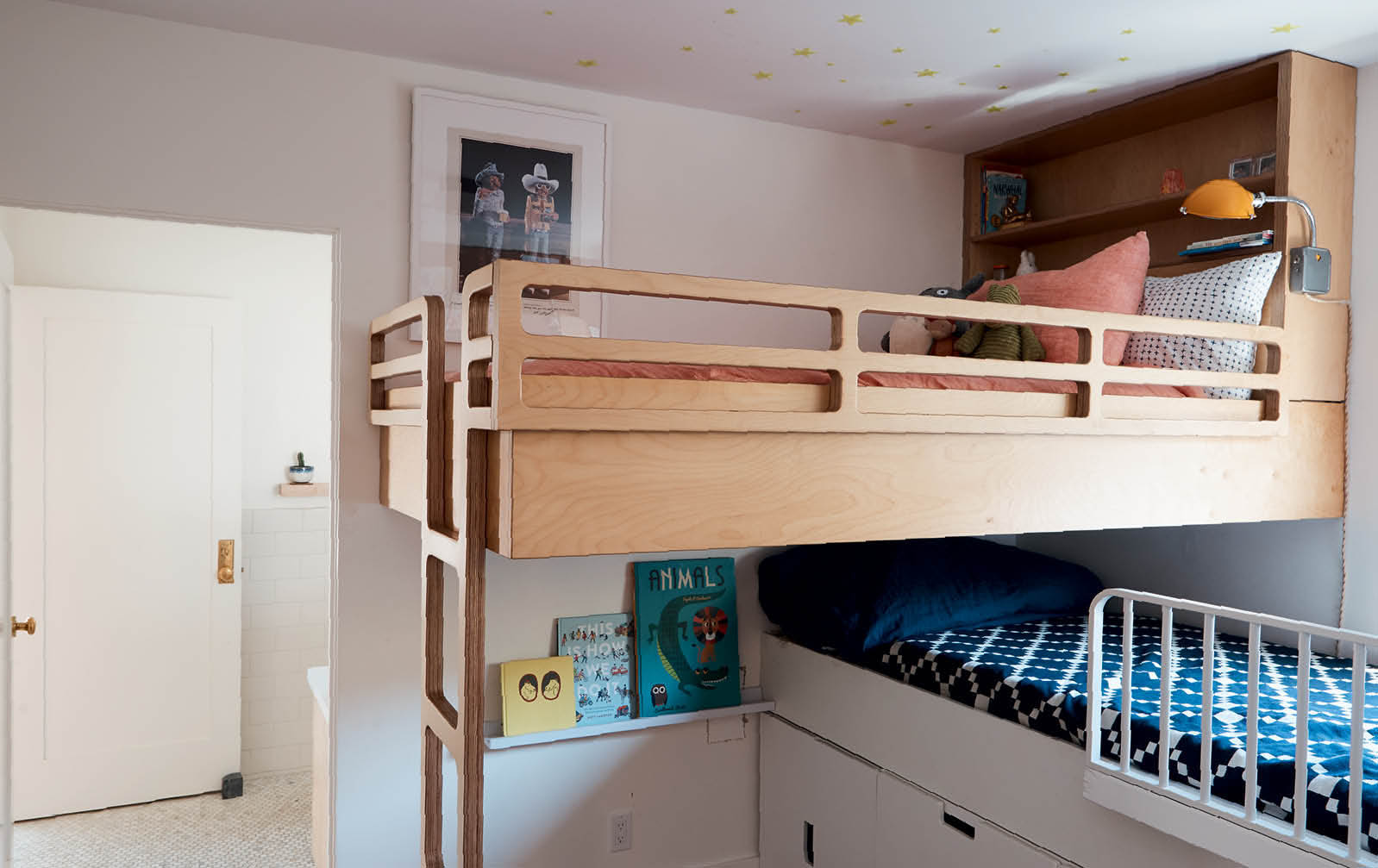115 Bunks, Lofts, and Cozy Nooks
THE
BUNK BED
BOOK
Laura Fenton
Photo by Matti Gresham.
To William,
this is your book as much as it is mine.
Digital Edition 1.0
Text 2022 Laura Fenton
Photo credits as noted throughout
Cover photograph courtesy of Benjamin Moore
Back cover photograph by Peter Dolkas
All rights reserved. No part of this bookmay be reproduced by any means whatsoever without written permission from thepublisher, except brief portions quoted for purpose of review.
Published by Gibbs Smith
P.O. Box 667, Layton, Utah 84041
1.800.835.4993 orders
www.gibbs-smith.com
Gibbs Smith books are printed on eitherrecycled, 100% post-consumer waste, FSC-certified papers or on paper produced fromsustainable PEFC-certified forest/controlled wood source. Learn more at www.pefc.org.
Library of CongressCataloging-in-Publication Data
Names: Fenton, Laura, 1980 author.
Title: The bunk bed book : 115 bunks, lofts, and cozynooks / Laura Fenton.
Identifiers: LCCN 2021022512 | ISBN 9781423657330(hardcover) | ISBN 9781423657347 (epub)
Subjects: LCSH: Bunk beds.
Classification: LCC NK2713 .F46 2021 | DDC 749/.3dc23
LC record available at https://lccn.loc.gov/2021022512
Contents
introduction
Everyone lovesa bunk bed
W hetheryou are five or sixty-five, there is something about a cozy sleeping nook thatexcites the imagination. Have you ever noticed how children seek out smallenclosures? They crawl under tables, hide in closets, and make blanket forts tocreate their own kid-size worlds. Or have you felt the feeling of joy that you getwhen you sit in a high-up perch? Looking down from a treehouse, we naturally gain afresh perspective and an everyday feeling of transcendence. Or perhaps youve feltthe comfort of an afternoon spent curled up with an engrossing book in a quietcorner? Bunk beds and enclosed sleeping nooks satiate some of our most universallongings: our love for secret places, the feeling of being aloft, and the comfort ofenclosure.
After my first book, The LittleBook of Living Small , was published, my then four-year-old son Williamtold me in no uncertain terms that he and I were going to write a book about bunkbeds. A particularly cool L-shaped bunk bed in my book had ignited his passion.After falling in love with that bed, the appearance of a lofted bed in a storybookwas enough to make it a bedtime favorite. His eagle eye would spot bunks in homemagazines and catalogs. If he found out that a friend had a bunk bed, oh man, wedhear about it for weeks.
Finally, my husband and I said wed begin the hunt for a bunk ofhis very own (even though he was still young for one). I created a Pinterest boardand started a collection of images on Instagram to gather ideas. We dug up picturesof the bunks my sister and I slept in as kids. My husband told us stories about acousin-filled bunk room at his familys summer retreat. Whenever friends came overmy son would ask me to show off our digital collection of dream bunks. Kids andgrown-ups alike have loved weighing in on the possibilities.
Along the way, I discovered the wide world of bunk beds: shortones, super-tall ones, triple bunks, trundle bunks, bunks that look like full-blownforts! Beds perched in lofts and tucked into cozy nooks also popped up in oursearches. It turned out that planning for my sons future bunk beds was joyful. Atthe same time, I couldnt help but notice that when magazines and websites wroteabout my first book, editors would often ask about the rooms that featuredyouguessed itbunk beds. When I posted a photo of bunks from Benjamin Moores annualcolor preview to my Instagram feed, it quickly became one of my most-liked photosever (and that image now graces the cover of this book!).
I decided to order a book about bunk beds to further fuel ourfun, but when I went to look for one, there were none in print. My son was right: Weneeded to write a book about bunk beds.
The Bunk Bed Book is adream book: Inside youll find 115 bedrooms from across the globe. Whether yourtastes are traditional or totally eclectic, there is a bunk or a sleeping nook foryou within. I hope this book will land on the shelves of decorators, designers, andmy favorite bookstores, but Id also love to see it tucked onto the shelves of kidsbedrooms and bunks. I hope itll bring you some of the joy we experienced when westarted to research bunks for my son.
The Bunk Bed Book isalso a handbook. Picking bunk beds or designing them from scratch is a surprisinglyintimidating task. (You should see my text messages and DMs from parents paralyzedby the choices.) And because bunks are often big investments, those decisions becomeeven more fraught. I cant tell you exactly what to buy or build because it willdepend on the space you have, but I can show you what worked for other families andeven boutique hotels.
Photo by Weston Wells.
Ive broken this book down into chapters based on the type ofroom, starting with Twos Company (classic two-bunk beds). From there, we exploreLoft Beds & Cozy Nooks, Room for Three, Bunk Rooms, and finally the fantasyrooms, Designed for Fun. In every caption, Ive tried to offer you the essentialinformation you need to know about a particular design. In some cases, Ive done adeep dive on a room, looking at it from all angles and in exacting detail, so youcan see exactly how the room came together.
In the final chapter, Practicalities, youll also find some keyresources. I give you the rundown on bunk heights, mattress sizes, bedding, ladders,lighting, and more. Ive also shared some of my favorite sources for ready-madebunks. I hope all of this will give you the confidence you need to create the bunkroom of your own dreams. LauraFenton
a brief history of bunk beds
B eforethey were a feature in shared kids rooms, bunks were more commonly the realm ofsailors at sea. To fit more men into a vessel, beds would be built stacked one ontop of another (and still are today). Illustrations and drawings of the belowdecksquarters of large ships show bunks dating back centuries. Bunked berths remain thebed of choice on trains, ships, and even submarines to this day.
In the seventeenth century in Europe, beds were often enclosedin cabinetry (either freestanding or built into the home). These so-called boxbeds offered many advantages: They gave some privacy to the sleeper in a one-roomhouse; they helped hold heat in at night, keeping the bed warm; and occasionallythey even separated sleepers from domesticated animals that might be inside a houseduring times of extreme cold. Some box beds were built with a second bed stacked ontop of the main bed as a place for children to sleep: These were a very early typeof bunk.
Clever carpenters surely built lofted beds into all manner ofhomes throughout history, but bunk beds proliferated with the dawn of the IndustrialAge when they could be mass produced in factories. By the early 1900s massproduction of furniture was well established in North America and Europe, and bunkbeds were being produced by the thousands. Manufactured bunks can be seen in photosof turn-of-the-century hospitals, dormitories, barracks, and prisons. Space-savingbunks became the bed of choice for these types of institutional settings.


